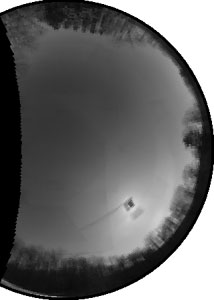How does the Moon's phase affect the skyglow of any given location? How many days before or after a new Moon is a dark site not compromised?

Tony Flanders
The answer is complicated because the Moon's glow is even more directional than light pollution. Skyglow is several times brighter near the Moon than on the opposite side of the sky. And the Moon's impact is greatly reduced when it's near the horizon.
But according to my own measurements and ones by Brian Skiff (Lowell Observatory), the sky brightness straight overhead at full Moon is roughly magnitude 18.0 per square arcsecond (18.0 mpss). That matches the skyglow on a moonless night at my home near the center of Boston, Massachusetts.
At first and last quarter, the Moon is only about a tenth this bright, yielding a sky brightness of 20.5 mpss — darker than anywhere within 40 miles of Boston's center. So in most suburban locations, a 50%-illuminated Moon has little effect unless it's close to the object that you're observing.
The natural background skyglow at a pristine site is around 22.0 mpss. That's somewhat brighter than the glow from a four-day-old (16%-illuminated) Moon.
— Tony Flanders
 0
0








Comments
You must be logged in to post a comment.